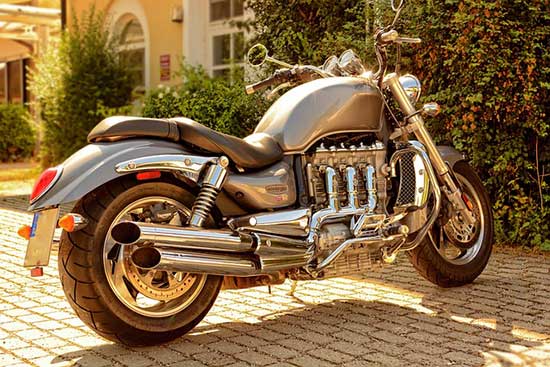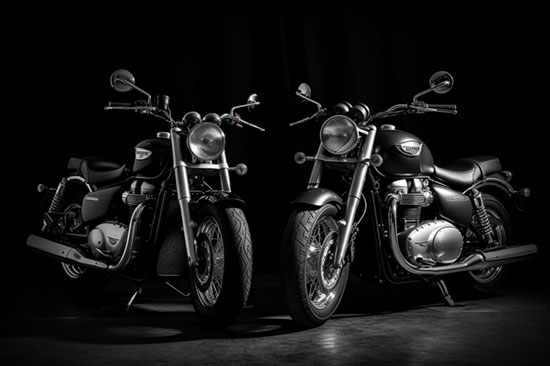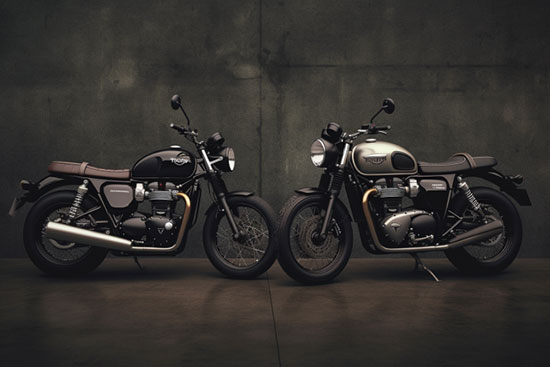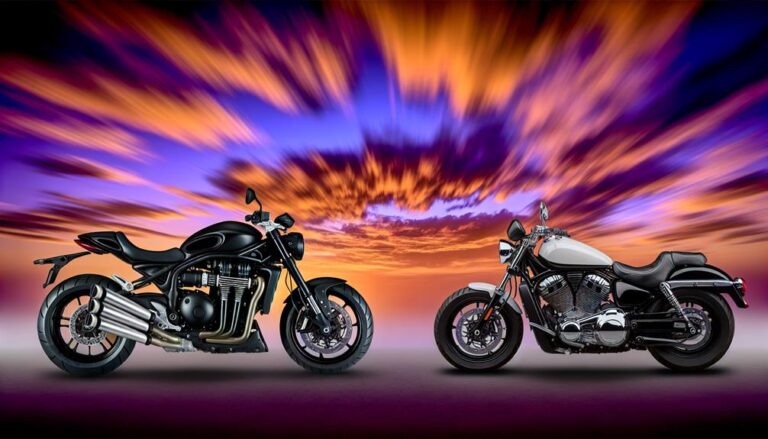When it comes to naked middleweight motorcycles, the Triumph Trident and the Street Triple are two of the most exciting options currently on the market.
While both bikes share a lot of similarities, they also have several major differences that set them apart.
We will closely examine the Triumph Trident vs Street Triple and compare their features, performance, and overall value.
Contents
Design and Styling
At first glance, both the Triumph Trident and the Street Triple share similar design aesthetics, featuring a stripped-back, sporty design.
However, if you take a closer look, you will notice some subtle differences. The Trident has a round headlight, while the Street Triple features a sharper, angular headlight design.
Both bikes have a muscular fuel tank, but the Trident’s design is slightly more sculpted and rounded.
Additionally, the Trident has a single-sided swingarm, while the Street Triple has conventional twin-sided swingarms.
In terms of color schemes, the Trident is available in four attractive colors, including Sapphire Black, Matt Jet Black, Silver Ice, and Crystal White. Meanwhile, the Street Triple comes in five color variants, including Crystal White, Matt Jet Black, Silver Ice, Sapphire Black, and a limited edition Matte Storm Grey.
Engine and Performance
One of the most significant differences between the Triumph Trident and Street Triple is the engine. The Trident is equipped with a 660cc triple-cylinder engine, while the Street Triple comes with a choice of two engines, a 660cc, and a 765cc triple-cylinder engine.
The Trident’s engine produces 80 horsepower and 47 lb-ft of torque, which is more than sufficient for most riders.
The Street Triple’s 660cc engine, on the other hand, generates 93 horsepower and 59 lb-ft of torque, making it more powerful than the Trident.
However, if you opt for the Street Triple RS, you get a 765cc engine that boasts an impressive 123 horsepower and 58 lb-ft of torque. This makes the Street Triple RS one of the most powerful naked bikes in its category.
Suspension and Brakes
Both Triumph Trident and Street Triple feature high-quality suspension systems that provide excellent handling and stability.
The Trident features a Showa upside-down fork and a Showa monoshock rear suspension, while the Street Triple comes with a Showa upside-down fork and a Showa piggyback reservoir monoshock.
When it comes to brakes, the Trident comes with Nissin two-piston sliding calipers with twin 310mm floating discs at the front and a single-piston Nissin caliper with a single 255mm disc at the rear.
Meanwhile, the Street Triple features Brembo M4.32 four-piston radial monobloc calipers with twin 310mm floating discs at the front and a Brembo single-piston caliper with a single 220mm disc at the rear.
Electronics and Features
Both the Triumph Trident and Street Triple come with various electronic features. The Trident comes with a multi-functional instrument panel, a six-axis IMU, and switchable traction control.
The Street Triple is equipped with a TFT display, ride-by-wire throttle, five riding modes, cornering ABS, traction control, and a quick-shifter.
If you opt for the Street Triple RS, you also get additional features such as a full-color 5-inch TFT display, LED daytime running lights, keyless ignition, and a lap timer.
Price and Value
When it comes to pricing, the Triumph Trident is significantly cheaper than the Street Triple, making it a more affordable option for those on a budget.
The Trident’s starting price is around $7,995, while the Street Triple ranges from $9,300 to $12,550 depending on the variant.
Although the Street Triple is more expensive, it does offer more advanced features and a more potent engine.
However, if you’re looking for a bike that offers good performance, excellent handling, and a range of electronic features at an affordable price, the Triumph Trident offers excellent value for money.
| Feature | Triumph Trident | Triumph Street Triple |
|---|---|---|
| Engine | 660cc, inline 3-cylinder | 765cc, inline 3-cylinder |
| Power Output | Approx. 80 horsepower | Varies depending on the model |
| Torque | Approx. 47 lb-ft | Varies depending on the model |
| Riding Modes | Road, Rain | Road, Rain, Sport, Track (varies) |
| Suspension | Showa upside-down forks | Showa or Ohlins (varies) |
| Brakes | Nissin, twin-piston front calipers | Brembo, twin-piston or monobloc (varies) |
| ABS | Dual-channel ABS | Cornering ABS (varies) |
| Electronics | Basic instrument cluster | TFT color display, advanced features |
| Weight | Approx. 189 kg (416 lbs) | Varies depending on the model |
| Seat Height | Approx. 805 mm (31.7 inches) | Varies depending on the model |
| Ergonomics | Relaxed riding position | Aggressive sporty riding position |
| Target Audience | Entry-level riders, commuters | Riders seeking more performance |
| Price (approximate) | Lower price range | Higher price range |
Conclusion
Overall, the Triumph Trident and Street Triple are both excellent naked bikes that offer a unique riding experience.
While the Street Triple is more expensive and more powerful than the Trident, the Trident is more affordable and still offers excellent performance and handling.
When making your decision, consider factors such as engine performance, technology, suspension, brakes, and price to determine which bike suits your needs.
Whether you opt for the Trident or the Street Triple, you’re guaranteed an exhilarating ride that will leave you grinning from ear to ear.






